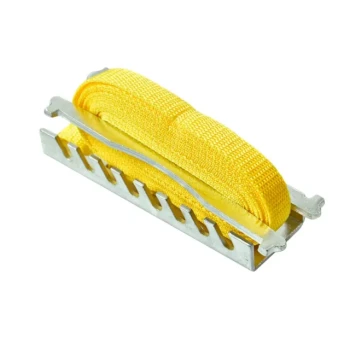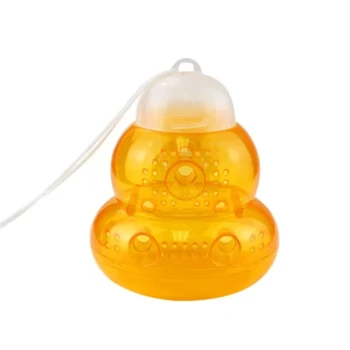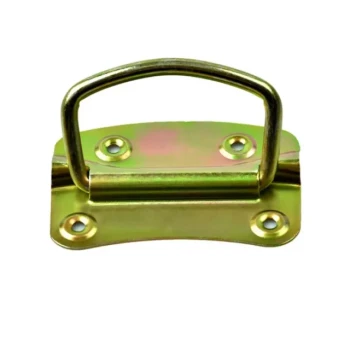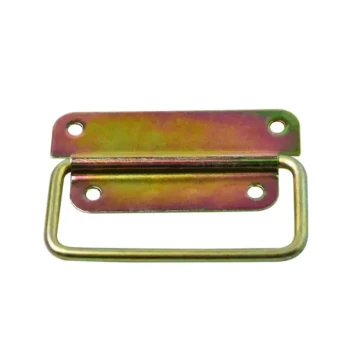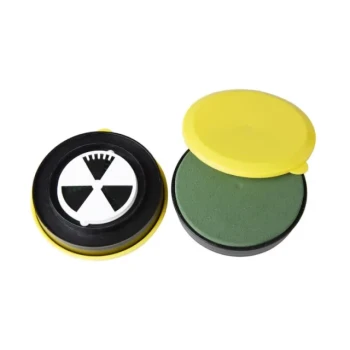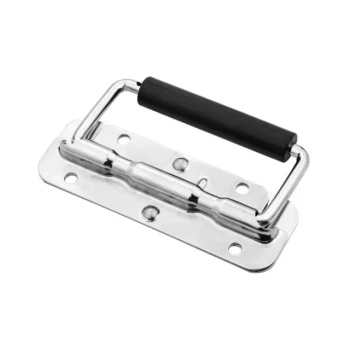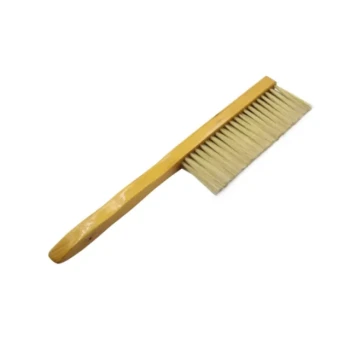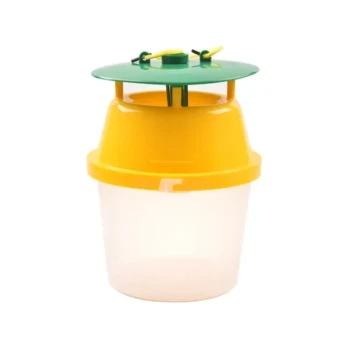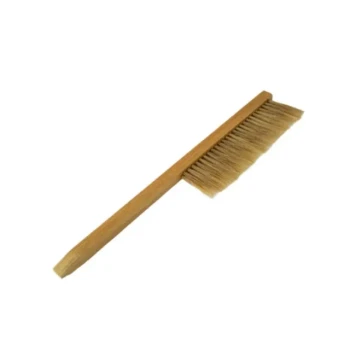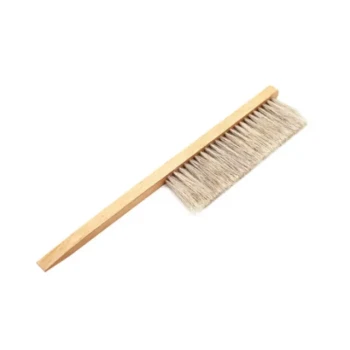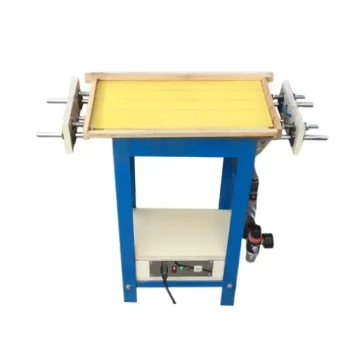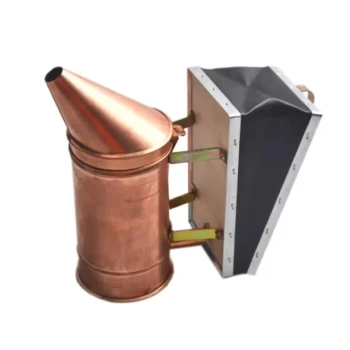Small hive beetles (SHB) pose one of the most persistent threats to honeybee colonies, capable of triggering colony collapse if left unchecked. The Cypress Bottom Board and Beetle Tray system offers a bee-safe, long-term solution by combining physical barriers with targeted pest capture. This guide reveals how to maximize beetle control while protecting your bees—using methods proven in commercial apiaries.
Integrated Hive Beetle Control
The Threat of Small Hive Beetles to Bee Colonies
Small hive beetles aren’t just a nuisance—they’re colony killers. Left untreated, SHB larvae tunnel through comb, defecate in honey stores, and trigger "slime-out," a fermentation process that renders honey inedible. Worse, beetles reproduce rapidly:
- A single female can lay hundreds of eggs in crevices or under hive components.
- Larvae mature in under a week, accelerating infestations.
- Colonies under stress (e.g., from mites or poor nutrition) are most vulnerable.
Did you know? Beetle populations spike in humid conditions, making sealed bottom trays critical for apiaries in warm climates.
Design Synergy: Sealed Trays and Screened Bottom Boards
The Cypress Bottom Board system tackles beetles through dual-layer defense:
- Screened Floor: A mesh base allows mites and debris to fall through while keeping bees inside.
- Sealed Beetle Tray: A removable, bee-proof compartment beneath the screen holds oil or diatomaceous earth (DE), trapping beetles that enter but blocking bee access.
Key advantage: Unlike open traps, this design prevents bees from contacting pesticides—a common risk with traditional methods.
Why Oil and Diatomaceous Earth Require Bee-Proof Barriers
Both oil and DE effectively kill beetles, but pose risks to bees if applied incorrectly:
| Method | Pros | Cons |
|---|---|---|
| Mineral Oil | Drowns beetles; low cost | Bees can drown if tray is unsealed |
| Diatomaceous Earth | Non-toxic; dehydrates pests | Harmful if inhaled by bees or beekeepers |
The sealed tray eliminates these risks by creating a physical barrier while maintaining trap efficacy.
Maximizing Effectiveness
Step-by-Step Installation for Optimal Beetle Capture
- Assemble the Cypress Bottom Board: Fit the screened floor onto your hive stand.
- Insert the Beetle Tray: Slide the tray into the sealed slot beneath the screen.
- Add Oil or DE: Fill the tray halfway with mineral oil or a thin layer of DE.
- Monitor Weekly: Empty and refresh the tray as needed—typically every 7–10 days during peak beetle season.
Pro Tip: Place hives in sunny locations to deter beetles, which prefer shade.
Maintenance Tips to Sustain Trap Efficiency
- Clean debris from the screen monthly to maintain airflow.
- Replace oil after heavy rain to prevent dilution.
- Rotate DE every 2–3 weeks; it loses potency when damp.
Comparing Oil vs. Diatomaceous Earth: Pros and Cons
- Oil works best in stable, dry climates (e.g., Mediterranean regions).
- DE suits humid areas but requires more frequent replacement.
Long-Term Hive Protection
Case Studies: Reduced Beetle Infestations in Apiaries
Commercial beekeepers using sealed tray systems report:
- 60–70% fewer beetles per hive after 3 months.
- Lower colony loss rates, even in high-risk regions like the southeastern U.S.
Seasonal Adaptation Strategies
- Spring/Summer: Increase tray checks to weekly; beetles breed faster in heat.
- Fall/Winter: Reduce to biweekly but don’t remove trays—beetles overwinter in hives.
Complementary Practices for Integrated Pest Management
- Strong Colonies: Well-fed bees with low mite loads are more resilient to beetles.
- Hive Hygiene: Regularly remove burr comb and propolis where beetles hide.
- Trap Crops: Plant watermelon or cantaloupe nearby to lure beetles away from hives.
Protect Your Hives—Safely and Sustainably
The Cypress Bottom Board and Beetle Tray system from HONESTBEE delivers wholesale-grade protection for apiaries, blending pest control with bee safety. By sealing out beetles without chemicals, it’s a scalable solution for beekeepers prioritizing colony health.
Ready to upgrade your hive defenses? Explore HONESTBEE’s beekeeping supplies—designed for commercial success and long-term hive vitality.
Visual Guide
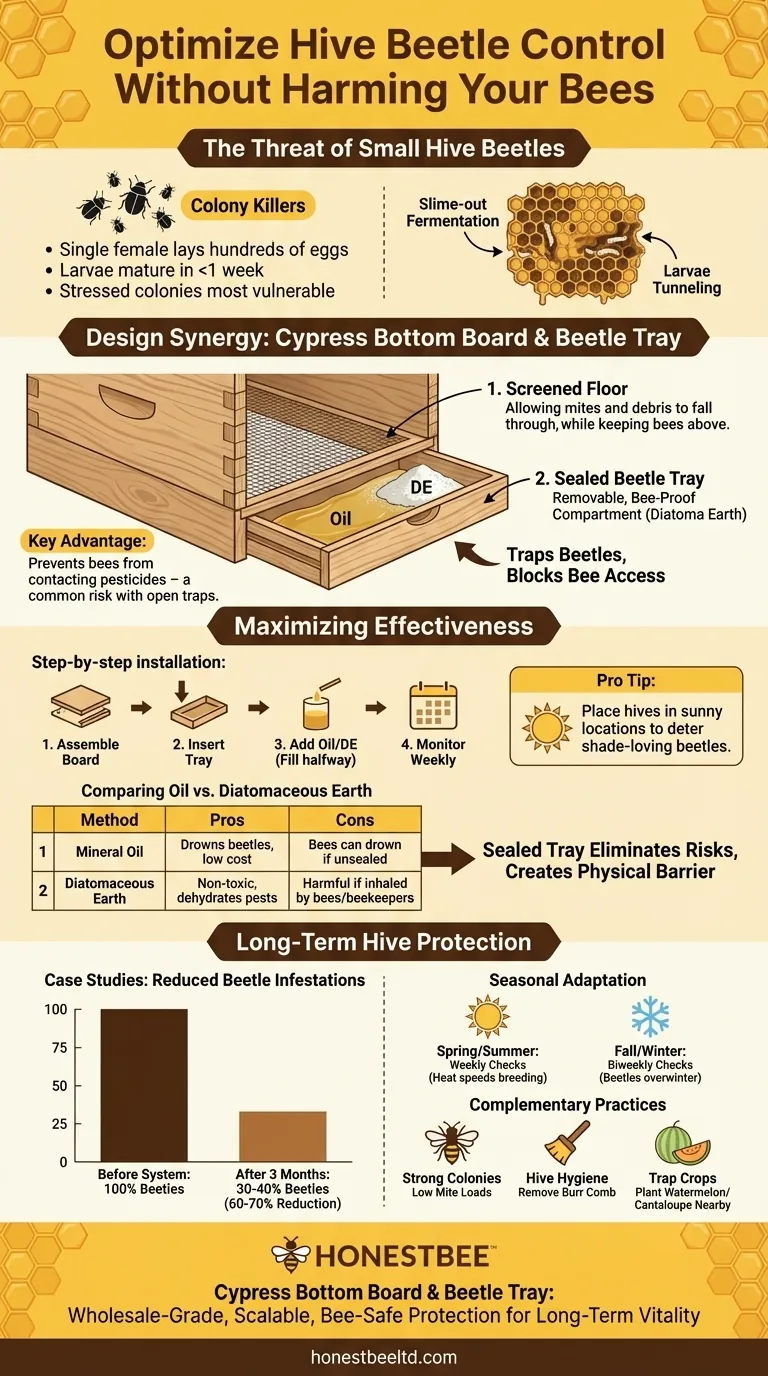
Related Products
- Black Plastic Beetle Barn Hive Beetle Trap for Beehives
- Reusable Aluminium Beetle Trap for Small Hive Beetles Silver Bullet
- Reusable Clear Small Hive Beetle Traps for Beehives Beetle Trapping Tools
- Removable Washable Hive Beetle Trap Attractants for Small Hive Beetles
- Plastic Beetle Blaster Trap Beekeeping Tools and Supplies
Related Articles
- How to Use Oxalic Acid for Varroa Mite Control: A Beekeeper’s Guide
- Spring Beekeeping: Essential Steps for a Productive Season
- Guide to Starting a Bee Hive in 7 Steps
- The Beekeeper's Dilemma: Choosing Between Wooden Frame Ideals and Plastic Frame Efficiency
- How to Strengthen Winter Bee Colonies: Science-Backed Strategies for Beekeepers






